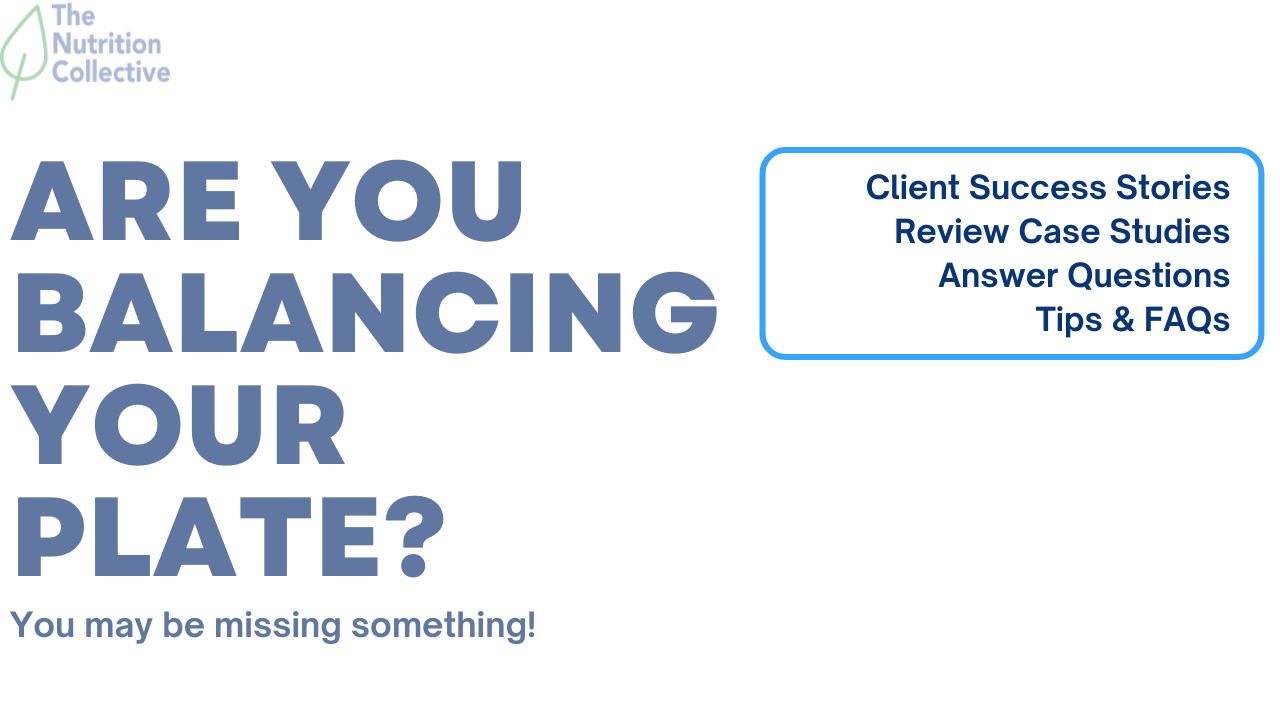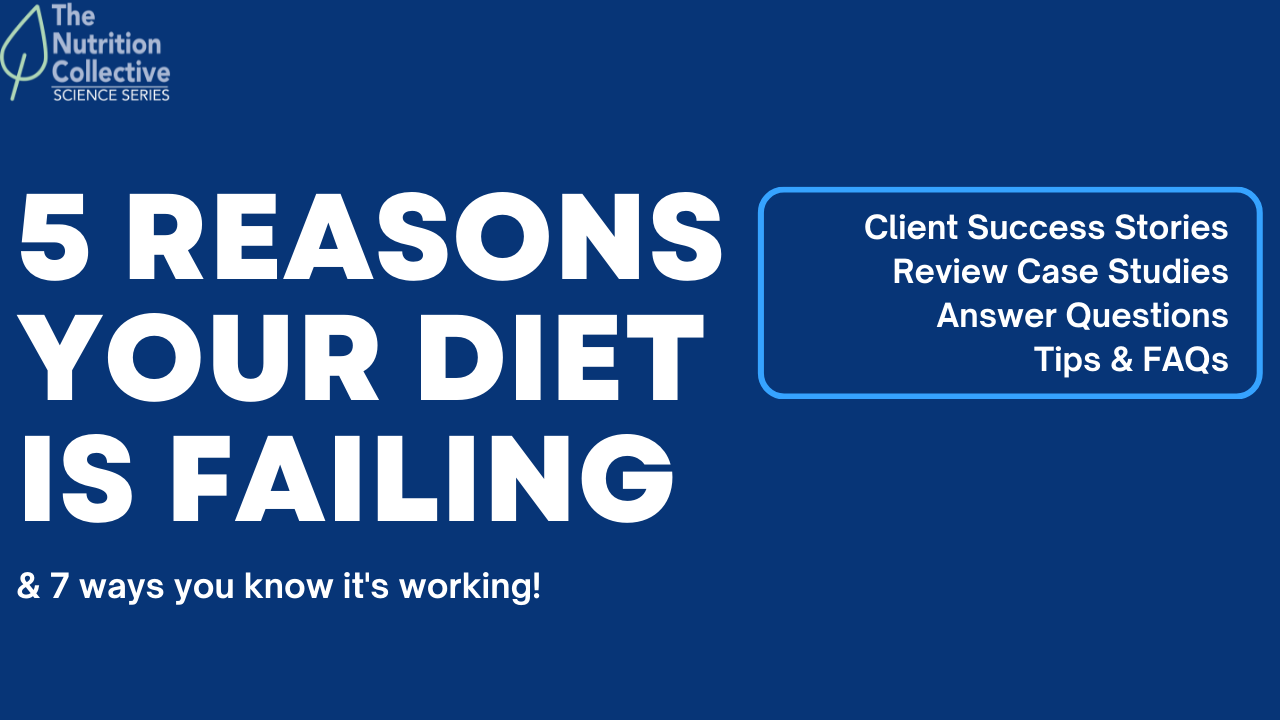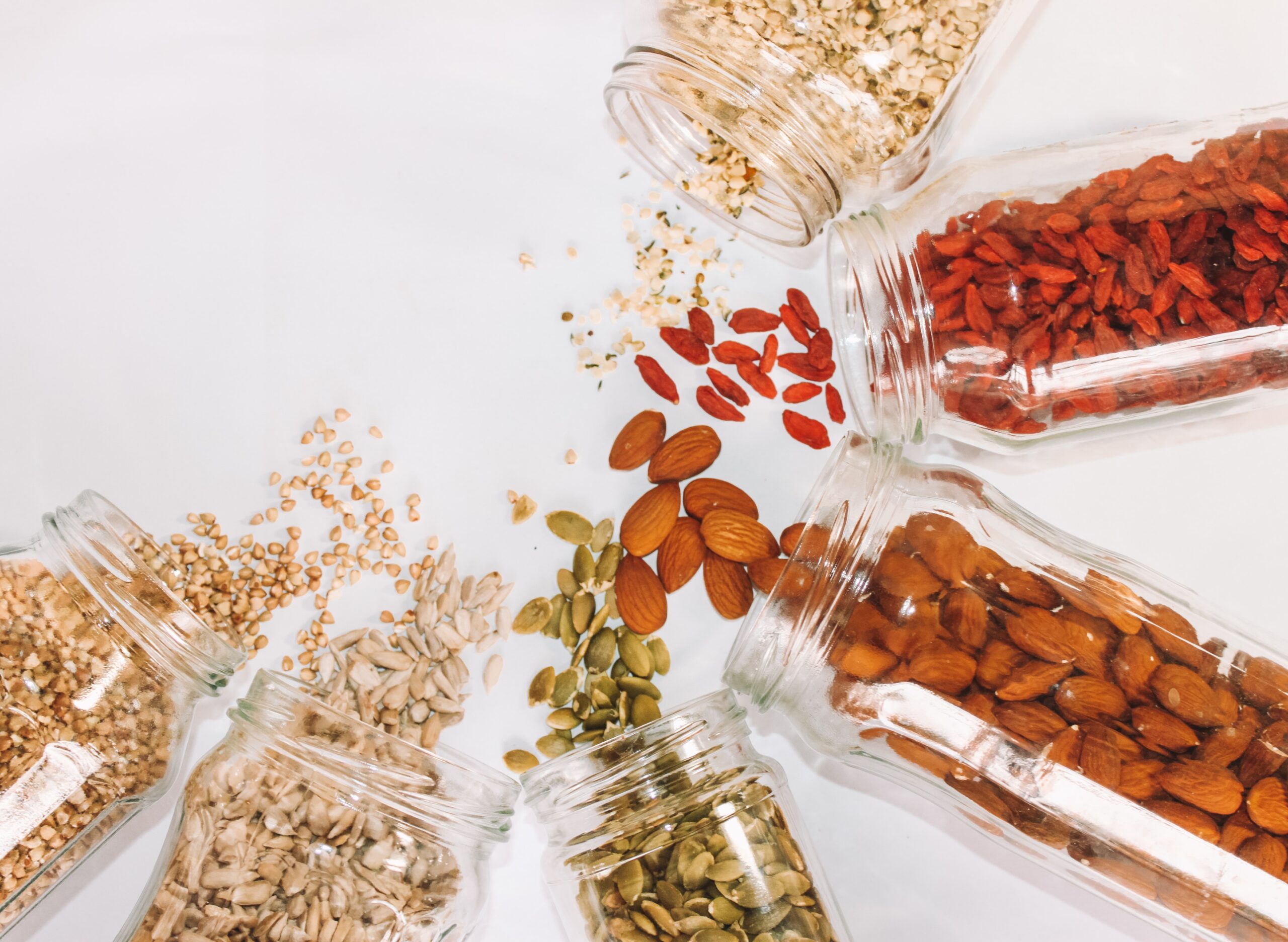Are you eating enough protein? Protein is an important macro-nutrient and it can be difficult to know just how much you need each day to hit your health goals. Keep reading to learn more about why protein is so important, how to calculate your specific needs, and get some tips and tricks to make sure you are getting enough protein every day!
Protein’s Functions
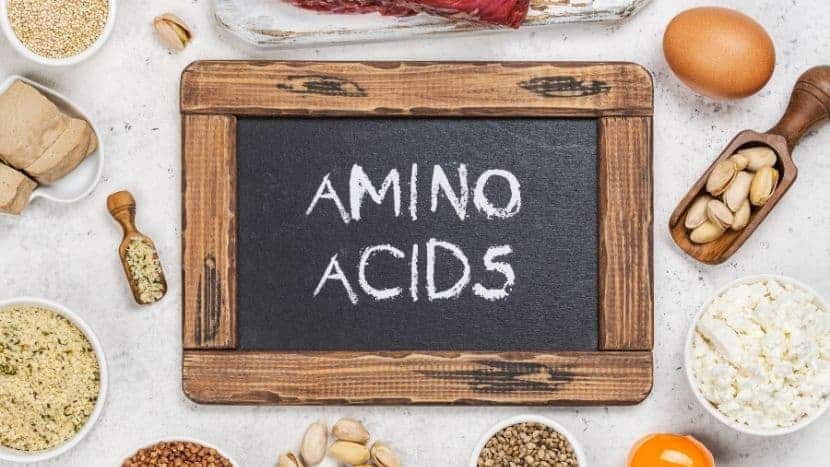
Proteins are macro-nutrients, along with fat and carbohydrates, and are made up of amino acids, which are known as “building blocks”. This is because there are 20 different amino acids that link together in different ways to build new proteins, which build tissues, muscles and bones, as well as other bodily proteins including things like enzymes and hormones. Our bodies can also use amino acids as an energy source.
There are two types of amino acids- essential and non-essential. There are 9 essential amino acids that cannot be made in your body, which means you will need to eat enough of these from dietary protein to make sure your body can function properly. The other 11 amino acids can be made in your body; however, they are still found in dietary proteins and are beneficial when consumed.
Benefits of Protein
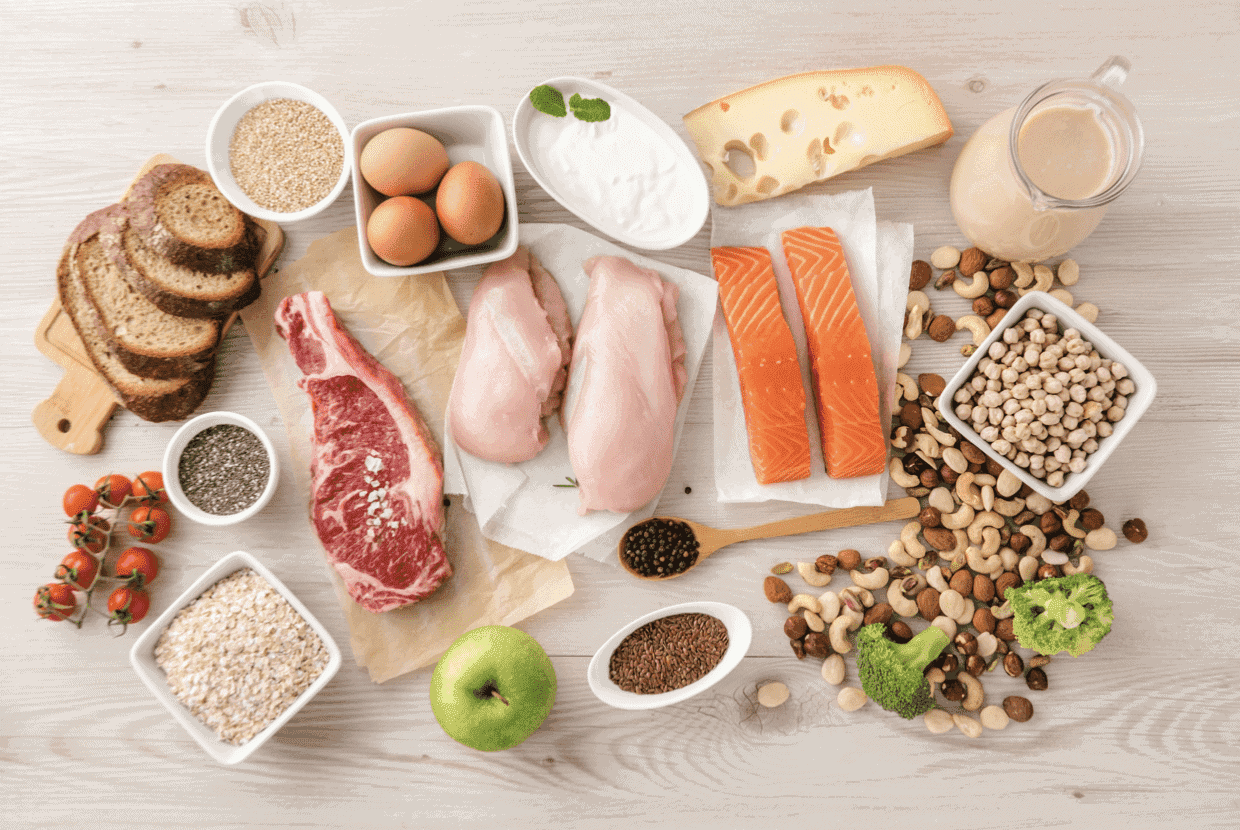
Protein is most often known for its muscle building capabilities. However, it can do so much more than that! Many high protein foods also include beneficial nutrients B vitamins, iron, and calcium that support many other processes in the body. Eating a high protein diet can also promote better meal satiety, boost metabolic rate and even promote better bone health and blood pressure.
1. Muscle Building and Maintenance
As mentioned above, protein is made up of amino acids. Amino acids are the building block of many tissues, including muscles. By eating enough protein in our diets, we are able to maintain muscle mass as well as gain muscle with strength training. Therefore, if you live an active lifestyle or engage in strength training, you will need to make sure you are eating an adequate amount of protein to support muscle growth. It’s also important to keep in mind that eating a high protein diet may help prevent muscle loss during weight loss (1).
2. Meal Satiety
Research shows that having a higher protein diet can help increase feelings of fullness and decrease feelings of hunger. Not eating enough protein throughout the day can cause many people to struggle to make it through the day between meals. By incorporating more protein into your breakfast, lunch, dinner, and snacks, you can stay more satisfied without having to overeat at meals or graze all day long. This also aids with weight loss and weight maintenance.
3. Bone Health
For some reason, many believe protein is bad for bone health. This myth is based on a theory that animal protein will increase that acid load in the body and lead to low calcium content in bones. However, this is not true. Research shows that all protein, whether animal or plant based, is beneficial for bone health because it reduces the risk for osteoporosis by maintaining bone density with age (2).
4. Metabolic Boosting
When we eat, we increase our metabolic rate to digest our food. This process is called the “thermic effect of food (TEF).” When compared to carbohydrates and fats, protein has a very high TEF, meaning it boosts metabolism and burns more calories when digesting than any other macronutrient. By eating more protein, our metabolism can work harder, which supports weight loss and healthy metabolic function.
5. Reducing Blood Pressure
Research shows diets high in protein, especially from plant sources, have the ability to reduce both systolic and diastolic blood pressure (3). High blood pressure can cause serious issues such as heart attack, stroke, heart disease, or chronic kidney disease, therefore it’s important to make sure you are eating an all-around healthy diet, including moderate protein, to help prevent this.
6. Wound Repair
Protein is an important nutrient when it comes to wound repair. This is because amino acids in protein are used to build every tissue in the body, including the skin! Eating adequate protein can help repair wounds from small scrapes to large gashes. This is especially important as we age or for those that are very active to quickly heal wounds and avoid infections.
7. Immune Strength
Speaking of infections, did you know eating more protein can support a healthy immune system? Once again, amino acids are used to build the proteins called antibodies that make up your immune system, so when we don’t have enough protein, our immune system can weaken. Antibodies are important to fight off viruses, bacteria, and other harmful substances that can negatively affect us, so make sure you are keeping up the protein to keep your body healthy.
Every Body’s Different
Each person’s daily protein requirements (and total nutrient requirements for that matter) are different. The amount of protein we need on a daily basis is reliant on many factors, including overall average energy intake, current body composition, health goals, physical activity level.
The minimum protein requirement set by the Academy of Nutrition and Dietetics is 0.36 grams of protein per pound (0.8 grams per kilogram) of body weight (4). This value is recommended to maintain basic nutritional requirements, but eating more protein, up to a certain point, can be beneficial depending on your personal needs. For example, people who are very active, or those whose goal it is to build more muscle, should try to consume more protein. Some sources suggest consuming between 0.8 to 0.9 g/lb (1.8 to 2 g/kg) for those who are highly active (5).
How to Calculate Your Needs
There are a couple different ways to calculate your protein daily protein needs. You can either base it off of an average grams per pound calculation, or you can factor in your activity level.
The first method is pretty straight forward. You will multiply your weight in pounds by a given protein amount to get your daily requirement. While the minimum requirement is 0.36 grams per pound, we recommend between 0.50 to 0.64 grams per pound (1.2 to 1.4 grams per kilogram) per day for healthy adults (6). For those with weight loss goals, who strength train, or are very active adults, we recommend around 0.64-0.90 grams per pound (1.4-2 grams per kilogram) depending on muscle mass.
Your age can also have an effect on your protein requirement. For example, older adults are recommended to have at least 0.45-0.54 grams of protein per pound (1.0-1.2 grams of protein per kilogram) per day.
Good Sources of Protein
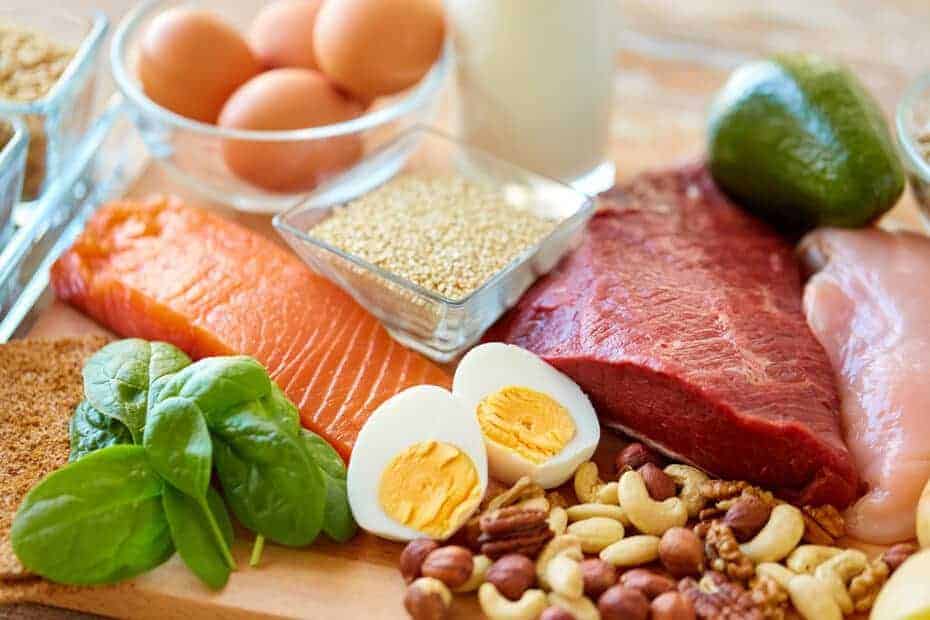
There are plenty of great places to get protein, from both animal and plant-based sources. Most people get a large portion from animals such as meat and dairy, however you can also get protein from plants, such as legumes, grains, nuts and seeds, and vegetables.
It is good to keep in mind that there is a difference between these forms of proteins, though. Animal-based proteins are “complete proteins”, meaning they contain all 9 essential amino acids. Plant-based proteins are mostly “incomplete proteins”. This means that they do not contain all 9 amino acids, only some of them. You can pair different plant-based protein foods to create a complete protein meal. That being said, some plant-based proteins are complete, such as quinoa, soy, chia seeds, buckwheat, and spirulina.
For example, pairing legumes with whole grains will create a complete protein. Check out our list of complete proteins and incomplete proteins below:
Complete Proteins
- Beef
- Pork
- Turkey
- Chicken
- Eggs
- Fish
- Shellfish
- Greek yogurt
- Cottage cheese
- Milk
- Tuna
- Turkey breast
- Soy Products
- Buckwheat
- Soy products (tofu, tempeh, edamame beans)
- Quinoa
- Hemp and chia seeds
- Spirulina
Incomplete Proteins
- Peanuts
- Almonds
- Oats
- Wheat
- Pumpkin seeds
- Broccoli
- Lentils
- Peanuts
- Brussels sprouts
- Green peas
- Avocados
- Mushrooms
Incomplete Protein Pairing Ideas:
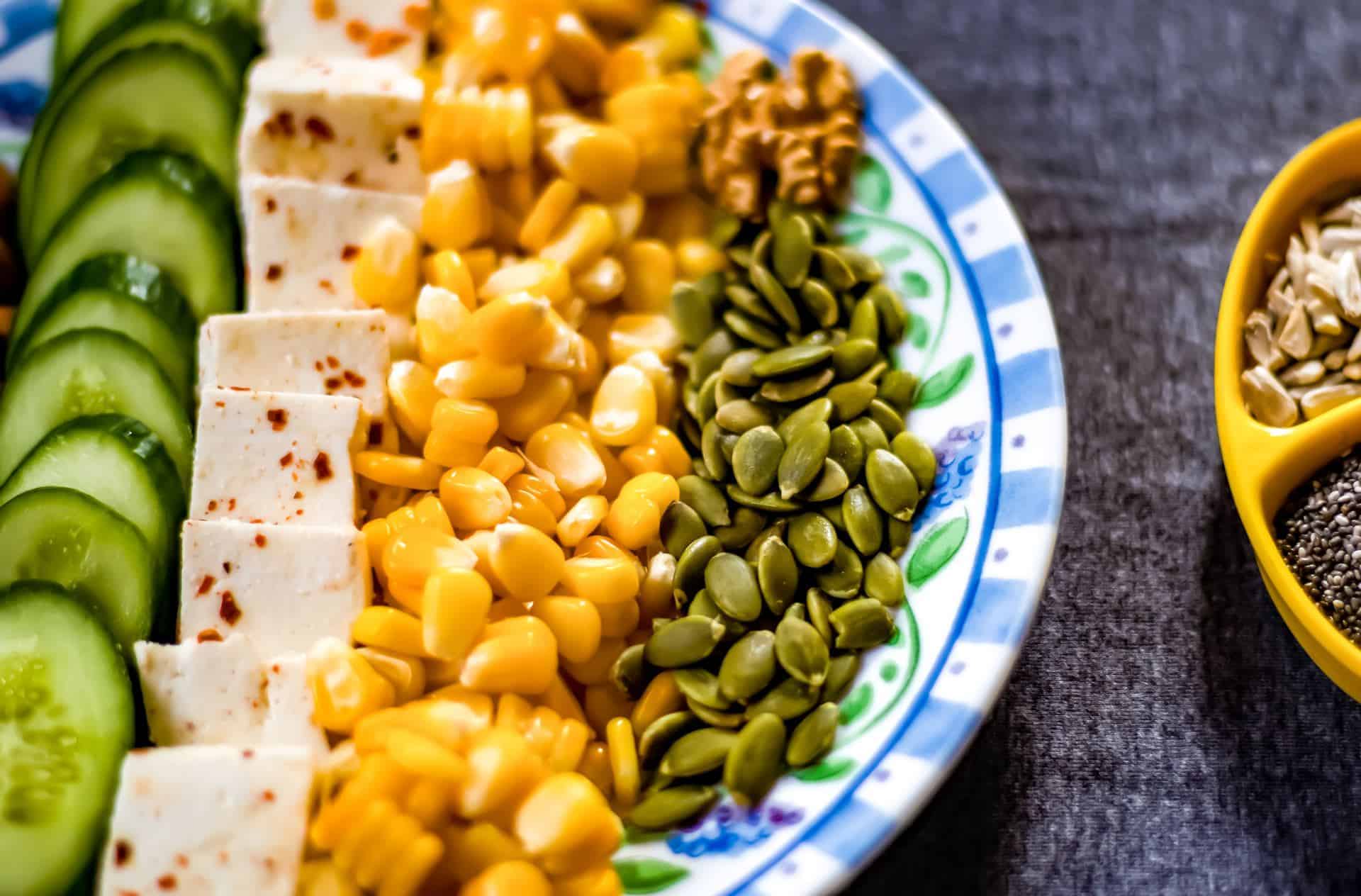
- Pair beans with grains, nuts or seeds (i.e. chickpeas and tahini)
- Pair grains with legumes (i.e. rice and beans)
- Pair nuts or seeds with legumes (i.e. peanut butter and flax seeds)
- Pair vegetables with grains, nuts, or seeds (i.e. pair kale with pumpkin seeds)
- Pair corn with legumes (pair corn with green peas)
As you can see, there are plenty of options to get your protein in. It’s just about knowing how much you need and how to fit it into your lifestyle.
How To Eat Enough Protein Every Day
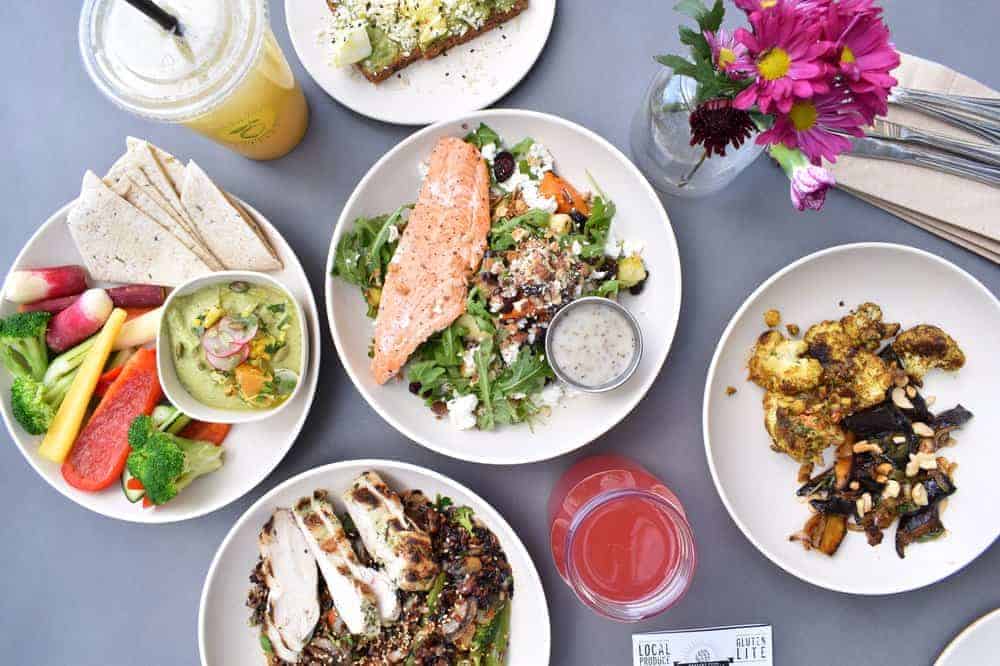
Counting your macros every day is most likely not going to be sustainable for the rest of your life, and that’s okay. While it’s good to have an idea of how many grams of protein you should be eating per day, in life, we’re probably not measuring everything we eat in grams. Here is a little cheat sheet to help you grasp a better idea of how to get more protein in your diet without having to weigh all of your ingredients! Follow along to find great protein pairings to fit about 25 grams of protein into your meal.
Breakfast Ideas
- 3 eggs + 1 oz cheddar cheese- 22.5 g protein
- ¾ cup Greek yogurt + 2 Tablespoons crushed peanuts- 26.7 g protein
Lunch Ideas
- 4 oz sliced turkey + 1 oz provolone- 26.6 g protein
- 4 oz tuna + ½ cup brown rice (cooked)- 24.6 g protein
Dinner Ideas
- 4 oz chicken breast + ½ cup quinoa (cooked)- 29.4 g protein
- 5 oz salmon fillet + 1 cup brussels sprouts- 32 g protein
- 3.5 oz 95% ground beef + ½ cup black beans- 28.4 g protein
Snack Ideas
- 1 mozzarella cheese stick + 1 oz almonds- 22.8 g protein
- 1 oz jerky + 2 hard boiled eggs- 22 g protein
Conclusion
Protein is an important part of a healthy diet and lifestyle. It supports many systems in the body that all work together to keep you well. Making sure you’re getting enough protein based on your personal needs can seem hard, however if you can get in a good routine of having high protein foods from good sources, whether they are animal or plant based, you can hit your macro and overall health goals!
Get Started with Holistic Fitness and Wellness
Wellness means something different to every individual. Being well gives you the ability to reach your personal goals, whatever they may be.
After all, when your body, mind, and soul are cared for holistically, you’re able to pursue and meet your goals with less resistance. And you can continually live a healthy, thriving, and sustainable life.
With Champ City, I help you determine a tailored and personalized approach to wellness by reflecting on your needs through a collection of Our personalized programs allow you to tune in with yourself and identify which ones require most of your attention. Strengthening each of these aspects will help provide an excellent foundation for living your best, healthiest life.
Sources:
- Bosse JD, Dixon BM. Dietary protein to maximize resistance training: a review and examination of protein spread and change theories. J Int Soc Sports Nutr. 2012 Sep 8;9(1):42. doi: 10.1186/1550-2783-9-42. PMID: 22958314; PMCID: PMC3518828. https://pubmed.ncbi.nlm.nih.gov/22958314/
- Bonjour, JP. Dietary Protein: An Essential Nutrient for Bone Health. Journal of the American College of Nutrition, U.S. National Library of Medicine, https://pubmed.ncbi.nlm.nih.gov/16373952/
- Altorf-van der Kuil W, Engberink MF, Brink EJ, van Baak MA, Bakker SJ, Navis G, van ‘t Veer P, Geleijnse JM. Dietary protein and blood pressure: a systematic review. PLoS One. 2010 Aug 11;5(8):e12102. doi: 10.1371/journal.pone.0012102. PMID: 20711407; PMCID: PMC2920332.
https://pubmed.ncbi.nlm.nih.gov/20711407/ - Nutrient Recommendations : Dietary Reference Intakes (DRI). NIH Office of Dietary Supplements, U.S. Department of Health and Human Services, https://ods.od.nih.gov/HealthInformation/Dietary_Reference_Intakes.aspx.
- Nutrition and Athletic Performance, Medicine & Science in Sports & Exercise: March 2016 – Volume 48 – Issue 3 – p 543-568
- doi: 10.1249/MSS.0000000000000852Mcmaster P, Phillips SM, et al. Protein “Requirements” Beyond the Rda: Implications for Optimizing Health. Applied Physiology, Nutrition, and Metabolism, 9 Feb. 2016, https://cdnsciencepub.com/doi/10.1139/apnm-2015-0550.


